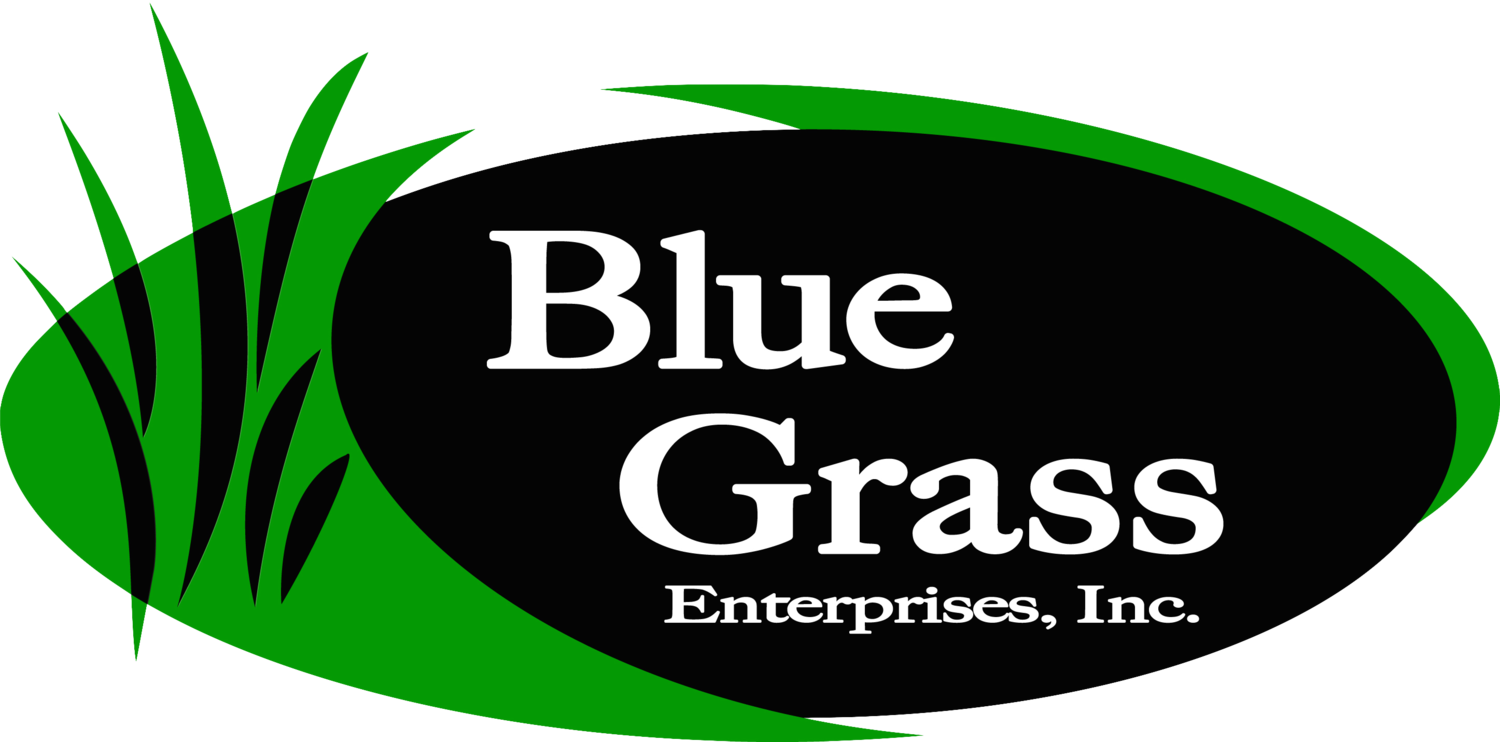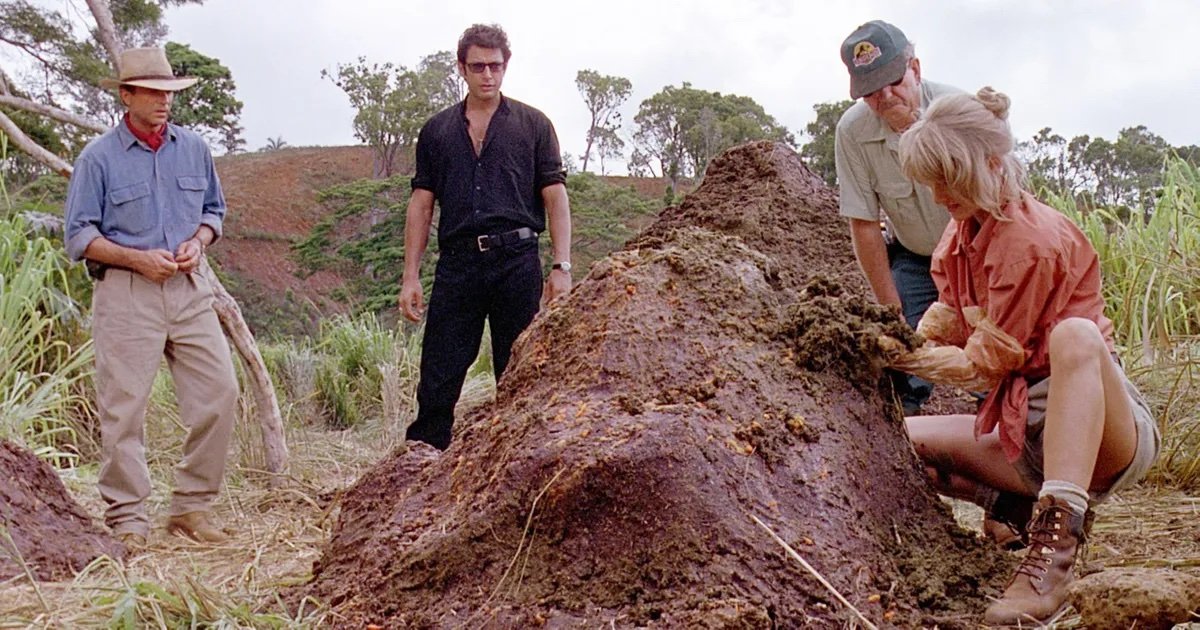A Brief History Lesson:
Suggested Movie Line Edit: That’s one big pile of [poo] fertilizer.
The earliest fertilizer materials were manures, plant and animal residues, ground bones and potash salts from wood ashes, and other products that could be naturally mined.
Aren’t Fertilizers Chemicals?!
First and foremost, it is important to understand that using fertilizer on your lawn does not automatically mean you are “using chemicals” on your lawn. Fundamentally, fertilizers are products that contain naturally occurring elements essential for plants to thrive. Some fertilizers include additional chemical components (such as a weed preventer, insect preventer, or herbicide), and those fertilizers often need to be used at very specific times of the year with specific application instructions for the chemical component to be effective. Therefore, if you would like to avoid the use of synthetic chemicals (such as herbicides or pesticides) in your lawn, it is relatively easy to do so while still giving your plants the food they need to be as healthy as possible.
So What Do Fertilizers Do?
Like all living things, plants require certain essential nutrients for growth. Essential nutrients are derived from organic elements such as carbon, hydrogen, and oxygen, as well as inorganic elements such as nitrogen, phosphorous, potassium, iron, and others. Lawns and other plants obtain these essential nutrients from the surrounding soil, air, and water, and are often naturally occurring. However, in many cases, plants and lawns can benefit from additional applications of essential nutrients. This is similar to how humans can benefit from taking vitamins - sometimes our regular diets don’t quite meet all of our needs. When looking at common fertilizer products, it is important to understand the various language on the label in order to select the correct one.
People who call us for the first time probably find themselves commiserating with certain Monty Python sketches.
If you have ever purchased a product from us, you know our mantra is to put down the right product, at the right rate, at the right time of year. This is why we encourage soil samples, ask about the square footage of your lawn, and want to see photos of any issues needing to be addressed. This information helps us feel confident we recommend the correct products and amounts for your lawn’s specific needs. The judicious use of fertilizers can help plants of all species to thrive. However, like anything, when fertilizers are used improperly they can pose a potential hazard to plants and the surrounding environment. That is why we tend to ask you a LOT of questions. #sorrynotsorry
Fertilizer Labels
Fertilizers are required by law to state their contents on the label. Generally speaking, macronutrients (nitrogen, phosphorous, and potassium) are commonly found in many over-the-counter fertilizer products. The three numbers in the fertilizer analysis indicate the percentage of nitrogen, phosphorous, and potassium present. For example, a fertilizer analysis of 16-4-8 has 16% Nitrogen, 4% Phosphorus (P2O4), and 8% Potassium (K2O). You can also find products containing secondary nutrients (sulfur, calcium, and magnesium). However, fertilizers containing secondary (Calcium, Magnesium, and Sulfur) and micronutrients are typically more difficult to find. The label should include a list of everything included in the bag, but that doesn’t mean that every particle in the bag will have each of those elements.
You will notice that we at Blue Grass prefer to carry products that are well-rounded regarding nutrients and minerals, like a multivitamin. That is why you will see numbers like 13-13-13 or 16-4-8 rather than something like 40-0-0. For more information on the products we carry, read here.
Manufactured Blends - Why Production Matters
A example of a cold blend fertilizer. Each color will represent a different nutrient. This makes it difficult to get an even feeding out of the product.
The most common type of fertilizer production is called a “cold-blend,” which means each different-colored pearl of product is a different nutrient that has been manufactured differently and then mixed together into a bag. This method is less costly for manufacturers to create, but as you can imagine, cold blends make it difficult to achieve an even distribution of nutrients across your entire lawn. Uneven distribution can be especially problematic when you take secondary or micronutrients into account.
A “hot-blend” fertilizer is a product that combines all nutrients together in the manufacturing process. This means each granule contains every nutrient labeled on the bag. This is part of what makes our 13-13-13 and 16-4-8 products so special. Hot-blend fertilizers are the most effective product available for even distribution of nutrition. Think of each of the granules as the plant equivalent of taking a multivitamin.
Both cold and hot-blend fertilizer nutrients can come from a myriad of sources, rendering the final product more or less available to plants. This is why, for example, you might find 13-13-13 in two different places for wildly different prices. The sources and manufacturing of the two different 13-13-13s are actually providing two very different levels of food to your lawn. Think of it like junk food vs a well-rounded meal. Both can give you energy, but one will sustain you in better health for longer.
Is There Such A Thing As Organic Lawn Fertilizers?
The honest answer is a qualified “it’s complicated”. While there certainly are some organic products available to homeowners, like chicken manure, most fertilizers we see are better described as being “chemical free”, meaning they do not include a synthetic chemical component, like a herbicide. If your goal is to feed your lawn as responsibly as possible, your time and energy would be better spent doing a soil sample and writing a custom program for your lawn.
Our 13-13-13, 16-4-8, gypsum, lime, and some other special order products (such as 22-0-4 w/ Humic Acid or K-Mag) are all examples of chemical-free fertilizers.
We highly recommend using soil samples to determine the exact needs of your lawn. That is because soil serves as a storehouse for plant nutrients and normally provides a substantial amount of the plant’s nutrient requirements. Simply applying random fertilizers blindly can result in deficits or surpluses of various nutrients that can impact the surrounding environment.
Math not your strong suit and need help determining the square footage of your lawn? Step 1: Take measurements. Step 2: Call us. We can help.
How Do I Know How Much Fertilizer to Use?
Fertilizer labels also include how many square feet the bag will cover. Usually, the recommended coverage per bag will give your lawn roughly 1# of Nitrogen/1,000 sq/ft. This is why it is vital you know the square footage of your lawn prior to fertilizer application so you know how many pounds of product to use in total.
The responsible, accurate application of food for your lawn will provide the necessary nutrients and energy so you can capture all of the many benefits lawns have to offer. For information on recommended spreader settings for our products, read here.
Why Should I Care If My Lawn Is Healthy?
Read here. It’s interesting. I promise.





